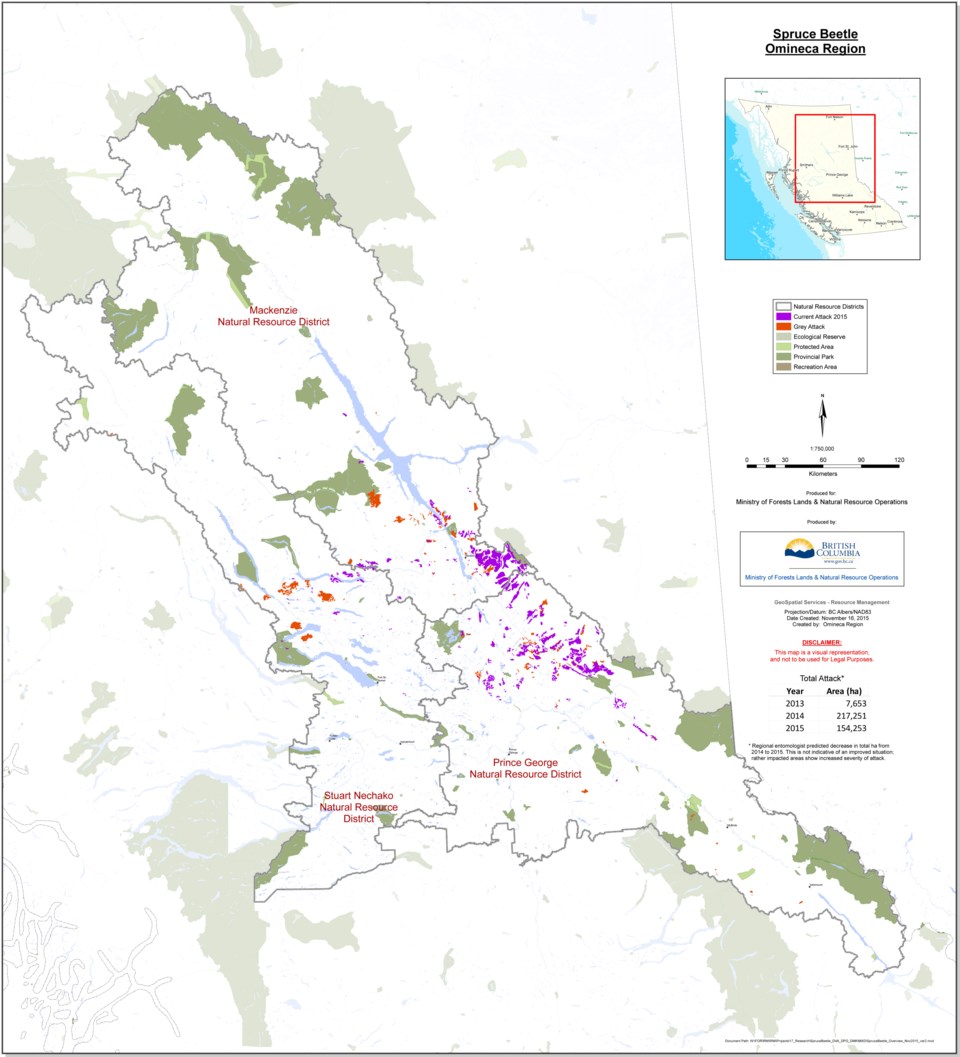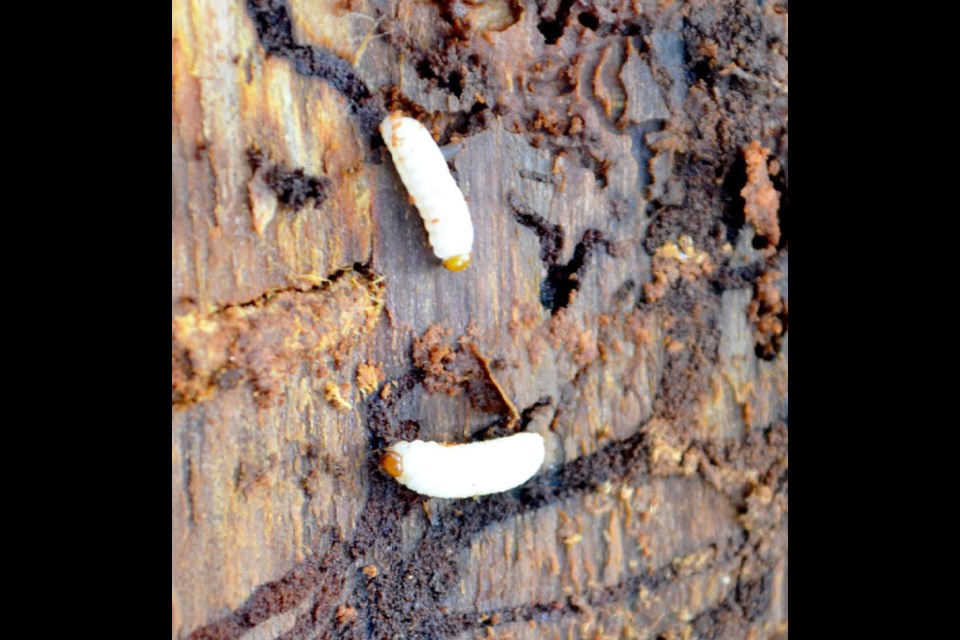The provincial government has committed $1 million for the coming fiscal year and has assigned a resource manager to develop a plan to battle an outbreak of the spruce beetle in the Omineca region.
Overhead flight surveys have shown an increase in affected area to about 156,000 hectares today from 7,653 hectares in 2013, Lands and Natural Resource Operations Minister Steve Thomson said in a teleconference Friday with regional media.
So far, it's been limited to the eastern valleys of the Mackenzie timber supply area and northern portions of the Prince George timber supply area but Thomson said it's a cause for concern and the outbreak is being carefully monitored.
"We need to be aggressive, we need to be proactive, we need to work with the communities and the public and everybody else - all of the licencees and First Nations that are on the ground - and that is the targeted approach that the province is going to be taking," Thomson said.
Options listed to contain the insect included "sanitation logging," or removing affected trees in timber harvesting areas and using a trapping technique in spots that are uneconomic to log or are wildlife habitats.
Giving forest companies a break on stumpage for harvesting beetle-killed spruce, like they received for beetle-killed pine, is not yet in the cards. "That is not the intention," Thomson said. "What the intention is, is to focus efforts on the sanitation process and direct activities in that area and that's part of the work that the chief forester will be doing in cooperation with the companies.
"We want to be able to address this while it [the spruce] has value."
The beetle typically feeds on the inner bark of weakened or fallen spruce trees, but is capable of killing healthy trees if the infestation is sufficiently serious and prolonged.
Heather Wiebe, resource manager in the Mackenzie Natural Resource District, has been designated the project manager and will be forming a public advisory committee made of academics, First Nations, trappers, local government officials and recreational users.
"These members will be able to voice other values that are of use in the forests in the Omineca that are beyond timber," Wiebe said.
It's the largest outbreak since the 1980s and Wiebe said it is the result of "compounding issues" that have helped the beetle flourish and have compromised the health of the trees and their ability to fend off the insect, from blowdown events to warm winters and springs to dry summers.
A government map showing the amount of area affected says the total rose to 217,251 hectares in 2014 and then fell back to 154,253 hectares in 2015. It also notes the decrease was predicted and does not indicate an improved situation, "rather impacted areas show increased severity of attack."
"In the previous detection of the beetle, it was shown in very patchy, salt-and-pepper kinds of instances," Wiebe said. "What we're seeing now is a very concentrated population and this concentrated population is also targeting trees that are smaller in diameter."
A typical outbreak lasts about seven years, "so we're in the middle of this cycle," Wiebe added.
She also said a beetle typically lives for two years but during an epidemic, beetles mature quicker and live just one year.
"So there's a one-year and a two-year cycle and this is part of the reason that we're having an outbreak currently," Wiebe said. The beetle's "favourite food is a very large spruce that has fallen down in the forest, usually during windthrow," Wiebe said. "They're a large diameter and in the side and the beetles populate the entire underside of the tree. It gives them the best food source and the best protection."
To set a trap a healthy tree is cut down to mimic blowdown.
"We allow the beetles to populate in high amounts in those trees and those trees are timely removed and milled quickly through a hot-milling process...it will kill the live adults and the larvae that are within the log and then that will help bring down the population numbers."
The technique is being used on more than 2,000 hectares, Wiebe said. Prince George-Mackenzie MLA Mike Morris said the riding is being "significantly impacted" and it's important to nip the outbreak in the bud.
"We also have to remember our forests are valuable not only for the forest industry itself, but trapping relies mature forests, and hunting and the guide outfitting business, so there are a lot of other industries out there that rely on a healthy forest ecosystem," Morris said.
The $1 million committed for the 2016-17 fiscal year is in addition to the $850,000 spent in 2015-16, according to the B.C. government.
The Omineca region contains 9 million hectares of forest, with 4.7 million hectares available for logging.




